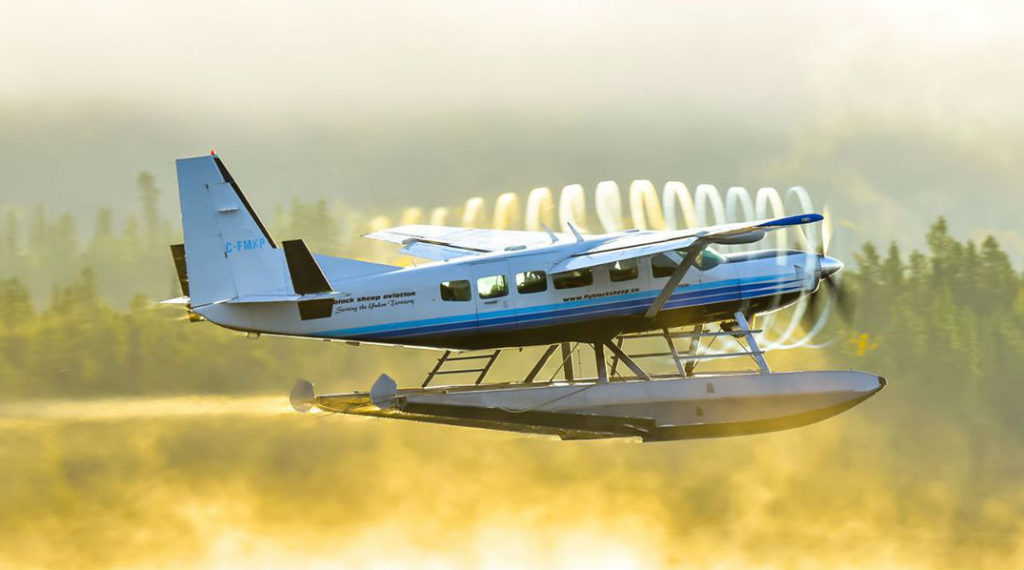Estimated reading time 6 minutes, 1 seconds.
Canadian floatplane operators, wrestling with a Transportation Safety Board (TSB) warning that they had been drifting into increasingly unsafe practices in recent years, now have a practicable solution courtesy of retired industry veteran Jim Hartwell and some major players in the business.

Their North Star Practices (NSPs), a set of practices and an audit process, is a how-to manual on safety now available on the Floatplane Operators Association (FOA) website (www.floatplaneoperators.org) and soon to be up on the Northern Air Transport Association site (www.natacanada.org). The idea is to give operators time to assess their own situations before the floatplane community ramps up operations next spring.
The reason for having NATA involved is that the FOA, with some 30 members, is being disbanded. Some larger corporate members have already joined NATA and Hartwell is urging smaller operators and individuals to follow suit. This would give the floatplane community more presence in Ottawa through NATA’s registered lobbyist, industry veteran Glenn Priestley.
While strictly voluntary, the NSPs anticipate changes to the Canadian Air Regulations, usually a prolonged process. In the meantime, there had to be “something out there that operators can incorporate into their safety management systems to show that they’re making a concerted effort,” Hartwell told Skies from Campbell River, B.C.
The project also involved others still in the business. They included Dustin Meierhofer, director of Transportation and Northern Safety for the British Columbia Forest Safety Council (BCFSC), who voiced his concerns to the FOA in 2016 about floatplane safety. Several forestry employees had died when floatplanes crashed during ferry flights to remote locations. Another key player as the NSPs evolved was Vince Crooks, operations manager at Wilderness Seaplanes, based in Port Hardy on the northeast coast of Vancouver Island.
The result is a document that reaches out to every facet of the floatplane industry. “There are sections that address operators, their corporate clients and employees, and other stakeholders who want to help diminish the potential for accidents,” said Hartwell, drawing on his career of more than 20,000 hours in floatplanes – mostly de Havilland DHC-2 Beavers and DHC-3 Otters – over more than three decades.
Test flown, as it were, by a select group of operators to sort out any kinks before publication, the NSPs define overall objectives, operator practices, wind limits, documentation and insurance, and client practices. There’s also a section which addresses, among other things, underwater egress training, flotation devices, flight in reduced visibility, safety management and dangerous goods.
The importance of underwater egress training is highlighted in a Nov. 14 TSB report on a 2018 floatplane accident in the Northwest Territories. Three of four passengers drowned when the Cessna U206G capsized after a hard landing on Little Doctor Lake. Investigators found that the extended wing flaps had partially blocked the rear cargo doors, limiting the passengers’ egress. That prompted an immediate safety advisory and the TSB pointed out that the door configuration had already been identified as a risk in emergencies and that it and other investigative agencies had pushed for a design change. The operator in this case stopped operating the Cessna on floats and began egress training for all flight crews.
Among other things, they recommend that floatplane operations should be limited to “official” civil daylight hours: between 30 minutes after sunrise and 30 minutes before sunset. “That would give the pilots a little more daylight so that they aren’t pushing the boundaries so much,” said Hartwell.
It’s evidently easy to push those boundaries in one of the most challenging flying environments in the world, particularly in mountainous coastal regions. Of 39 aircraft accidents or incidents still under TSB investigation as of Dec. 4, five involved floatplanes so far this year. Four resulted in a total of 10 fatalities.
“I suspect Transport Canada will be looking for answers,” said Hartwell. “So, why wait? Instead of burying our heads in the sand, we should be taking the initiative. Bush flying, floatplanes, is a sector of the aviation community deeply rooted in our past, and it continues to play its part in building this great nation. However, if it’s to remain viable, it must address the safety issue.”
Last but not least in the NSPs is a section on how operators can measure their own compliance through two layers of audits. Hartwell told Skies that “static” audits would be essentially internal reviews of an operator’s records and documentation of procedures. The process would be stepped up by “dynamic” audits “to determine whether the operator is performing in compliance with NSP requirements.”
The process, which culminates with a review by the Air Carrier Safety Working Group set up by the BCFSC in 2016, enables operators to show to their employees and customers that they are operating to what Hartwell called “a higher standard.”








